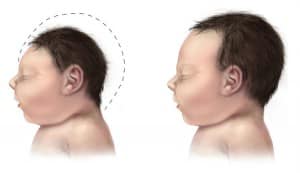To learn more about the history of the Zika virus, go to The Zika Virus and Pregnancy.
The Zika virus infection can be serious during pregnancy. While 80% of the population infected with Zika will never have symptoms, it seems based on the latest research that this is different for pregnant women.
Here are the main Zika symptoms:
- Flat red skin rash covered with small bumps which is often itchy, feeling of itchiness under the skin.
- It often spreads from the face to the body (90%).
- Eye redness (conjunctivitis) (55%)
- General symptoms, including:
- Weakness
- Headaches
- Vomiting
- Bloated appendages
- Lack of energy
- Short-term muscle and joint pain (65%).
- Possible joint bloating, especially in hands and feet
- Low fever (38.5 C or less) (65%)
It normally takes 3–12 days after infection for the symptoms to appear. These symptoms are generally benign, not serious and last for 2–7 days. You can deal with them with acetaminophen, rest and drinking fluids.
Zika is diagnosed based on the symptoms and travel history or recent activity in high-risk zones. Based on the situation, your health professional will prescribe additional lab tests (blood, urine, immunoglobulin) as needed. Not everyone is tested but if the doctor believes there is a risk due to the pregnant woman’s history, or a woman who would like to become pregnant, they will prescribe tests for them and their partner.
What can happen to a pregnant woman or a woman who wants to become pregnant when they’re infected?
The Impact of the Zika Infection during Pregnancy
A Zika infection is not serious for the general population. But it is risky for a pregnant woman even if they don’t have symptoms because the virus enters the placenta. This virus can impact the baby’s in utero development and cause congenital malformations such as:
-

Microcephaly (smaller brain) Microcephaly (smaller brain);
- Brain anomalies (Guillain-Barré, which is a deficiency, paralysis of certain nerves, or other neurological problems such as stiff joints);
- Ocular anomalies;
- Hearing problems;
- And even in utero death of the fetus.
Longer term, late development and learning problems are possible.
Currently, it’s difficult to attribute specific risks to each pregnant woman, but based on a study in 2016, 1% of newborns infected during the first trimester of pregnancy will have microcephaly. In 5–15% of infected newborns, other impacts mentioned above will occur.
If you want to learn how the virus is transmitted, read the entry The Transmission of the Zika Virus.


